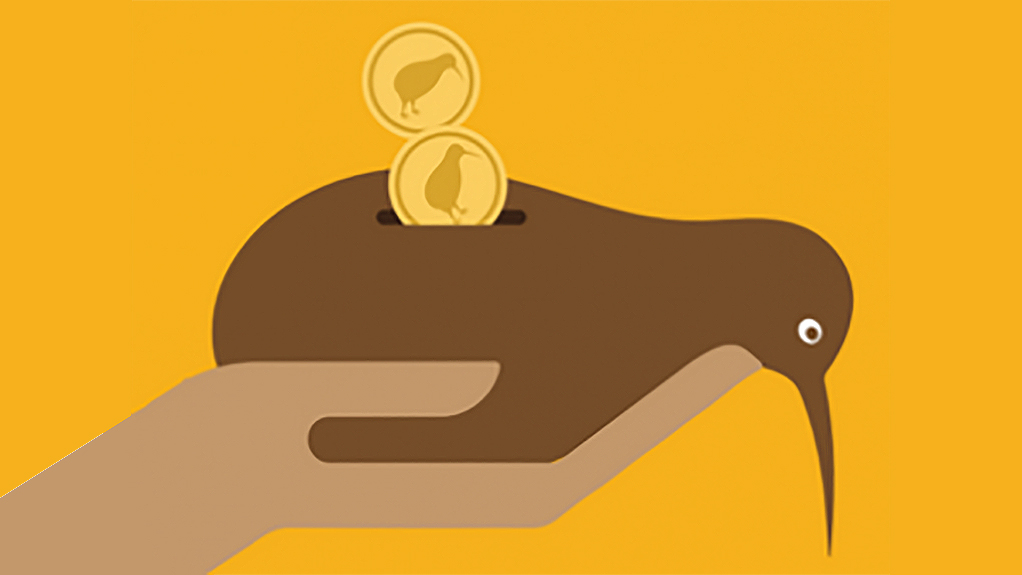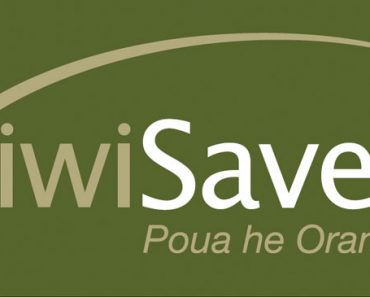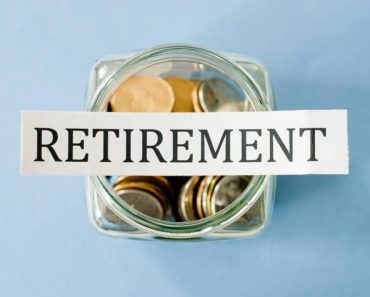
Ask someone who has retired and they’ll say you should start saving for retirement as soon as possible. Even if it appears a long way off, it helps to start retirement preparations as early as you can. How much you need to save depends on your circumstances, but the earlier you start, the better the life you will ensure for yourself when you reach retirement age.
KiwiSaver is a highly effective tool you can use to save for retirement. This programme provides all participants with government subsidies on their ongoing savings. It is an easy and convenient way to save and invest for your retirement years. Here’s how KiwiSaver functions and what benefits you can receive from it.
What is Kiwisaver?
KiwiSaver is an efficient way to make savings and increase your retirement investment returns. It also allows you to get government and employer contributions. If you choose to participate in this voluntary work-based savings scheme, a small portion of your salary will be deducted and kept aside in your KiwiSaver investment fund. Moreover, your employer must contribute a minimum of 3% of your gross salary.
KiwiSaver is intended for citizens or residents living in New Zealand or normally living there. If you work on a temporary work visa in New Zealand, you should inform your employer that you wish to opt-out of Kiwisaver.
KiwiSaver is also accessible for the self-employed, though there are no employer contributions in this case.
The money that accumulates is invested in your name by accredited Kiwisaver providers until you are eligible for NZ superannuation when you reach the age of 65. In certain situations, you can have access to the money earlier — for example, if you get seriously ill or are having financial difficulties, or if you purchase your first house.
What are the benefits of KiwiSaver?
KiwiSaver is a reliable and simple tool if you are searching for a way to save. Signing up for KiwiSaver is less about ‘why’ and more about ‘why not?’ due to the advantages it provides. With more than 2.5 million people enrolled, KiwiSaver is one of New Zealanders’ preferred means of saving for retirement. KiwiSaver provides a variety of generous benefits of membership to motivate you to start saving. The following are some key points of the programme:
● KiwiSaver contributions are deducted from your salary before you see it. That facilitates saving.
● If you are an employee, your employer has to contribute to your KiwiSaver account at least 3% of your gross salary or wages. That is in addition to your contributions.
● The government also pays into your KiwiSaver account – a yearly government contribution of up to $521 (for contributing members that are 18 years of age or older).
● Investment decisions are made by a fund manager whose role is to provide you with the best return on your risk. You don’t do anything.
● In addition to saving for your retirement, you can also use KiwiSaver to purchase your first property via a KiwiSaver HomeStart grant and home purchase withdrawal.
● Upon three years of KiwiSaver membership, you may be able to withdraw almost all funds from your account (leaving a minimum balance of $1,000). You may also be qualified for a grant of up to $10,000 if you’re constructing a house or $5,000 if you’re buying an existing property — both subject to terms and conditions.
● If $50,000 is earned by a 30-year-old who shifts from 3 % to 4% of contributions, the person will eventually wind up with even more than 10% extra saved at 65 years.
● Most often, fees are lower than other managed investments. Scale economies and more competitive pressure should drive them down even more.
● If you switch careers or consider leaving the workforce, your KiwiSaver account leaves with you.
● You may access the funds in your account early if you experience distress.
● Investing in managed funds is a cost-effective option.
How does KiwiSaver work?
There is no obligation to join KiwiSaver. But if you’re 18 or older and starting a new job you’ll be automatically registered (with some exclusions). And typically, that is a good thing.
Take a look at how KiwiSaver works:
● After the automatic enrollment, you can ‘opt-out’ (leave KiwiSaver) but within 2 and not more than 8 weeks of starting a job. You must contribute for a minimum of 12 months once you join. In the case you’re 18 or younger and you’ve been wrongly registered, you can opt-out via Inland Revenue.
● You can decide to join KiwiSaver any time — even though you can’t opt out when you do – either through your employer or a KiwiSaver provider.
● You can decide to contribute from 3% to 10% of your gross (pre-tax) wage to your KiwiSaver account as an employee.
● Please keep in mind that any benefits from the government you are eligible for is generally means-tested against your overall salary, which means your KiwiSaver contributions may not be taken into consideration when your eligibility is considered.
● At the end of 12 months at KiwiSaver, you’ll be able to pause from saving (referred to as ‘savings suspension’) or continue.
● Immediately after you join, you can start making voluntary contributions (fixed amounts or frequent automatic payments) at any moment, either straight to your KiwiSaver provider or via Inland Revenue.
Who can join KiwiSaver?
You are eligible for KiwiSaver if:
● you live or normally reside in New Zealand;
● you are a citizen of New Zealand or you are allowed to stay indefinitely in New Zealand;
● you are under the NZ Super Eligibility Age (which is currently 65 years of age).
If you satisfy all these requirements to join KiwiSaver, you should consider joining SuperLife. It is one of the most efficient KiwiSaver schemes.
How much must you save?
The earlier you start to save, the easier the process will be for you. Take note that time can greatly affect your investment and that small additional contributions can make a huge difference in your financial independence in the future. The amount you save depends on your decision. You must allocate at least 3% of your pay to KiwiSaver if you are an employee. You can also choose to raise the level to 4%, 6%, 8%, or even 10%. Your KiwiSaver contributions, deducted via the NZ PAYE tax programme, are debited from your wages each time you’re paid.
You can cease saving after the minimum of 12 months of membership by informing the Inland Revenue Department that you wish to suspend your savings. It can last up to 1 year, and then saving can be restarted. Saving can also be resumed whenever you want.
If you’re not employed, you decide how much you want to save, even if it is nothing. You can always change the level whenever you want. No minimum contribution level is set for SuperLife. The best time not to save anything in KiwiSaver is before the age of 18. After that, you should save whatever you can manage, preferably $1,042.86 a year, (that is $87 a month). This scheme maximizes government payments.
What role does the government play?
If you’re 18 or older, the government pays an annual subsidy recognized as the government contribution. It is equivalent to half the savings you made over the year, up to $521.43 (approximately equal to $10 a week or $43 a month).
After three years, if you save up to $5,000 ($10,000 for a couple), you may be eligible for a $1,000 HomeStart grant if you want to buy an existing house. The HomeStart grant will be doubled if the house is a recently constructed residence.
What does an employer pay?
If you are an employee and you are 18 years of age or above, your KiwiSaver savings will be subsidized by your employer. Employer subsidy equals 3% of your salary. Your employer subsidy is taxed, and your KiwiSaver account receives the net amount.
There are a few exceptional cases to the saving requirements for your employer — you may not be entitled to an employer contribution from KiwiSaver if you have received an employer contribution through a different superannuation scheme. Your minimum savings in KiwiSaver must also be debited from your salary and paid through the IRD.
Where are your KiwiSaver funds invested?
Your savings, together with the government payments and money from employers, go into your KiwiSaver account, which can be invested in several ways that your provider makes available for you.
You can select from a variety of options under SuperLife — from cash and low-risk options to higher-risk options and shares — and modify your options at any point. The return you receive depends on what type of options you have chosen and what’s happening in the markets.
Who’s your KiwiSaver provider?
It is possible you’re in KiwiSaver but you don’t know which company manages your money. Your employer may be aware, and the folks at Inland Revenue can also confirm who you are with (myIR Secure Online Services or 0800 KiwiSaver).
Knowing where your money goes is a good idea. Switching providers isn’t hard, but you need to identify who you are with first, so you can check them out.
Tips to increase your KiwiSaver balance
There are some quick and straightforward ways you can boost your KiwiSaver. Check out these six tips on how to increase the balance on your KiwiSaver account:
1. Make voluntary contributions promptly
You can make extra one-time payments to your KiwiSaver account whenever you want. Received a tax refund? Transfer it directly into your KiwiSaver account to start giving your savings a little increment. Got a work bonus? Put that in, too! You don’t have to put in every additional bit of money that you get, but if you’re concerned about retirement savings, then it’s a brilliant idea to plenish it when you can.
2. Make sure you get a member tax credit
If you are between the ages of 18 and 64 (or beyond, if you have been a KiwiSaver member for less than six years), then you are eligible for a government tax credit of a maximum of $521.43 per year. It’s instant if you make a contribution of at least $1,042.86 annually (during July 1-June 30), but if you’re unsure, consult your KiwiSaver provider.
3. Increase your contribution rate
The more you put in, the more money you’ll have in your account. With a higher contribution level being introduced, you can create leverage and go for a higher one to boost your savings. You can modify your contribution every three months, and you can decide to contribute anything from 3 to 10% of your income.
4. Be curious about your KiwiSaver statement
Take an active interest and keep track of your investment pays. To get a greater comprehension of where and how money is being invested, study your member statements and newsletters.
5. Escape the default fund
if you did not select a fund at the time you were registered in KiwiSaver, you are likely to be in the default scheme’s conservative fund. These are generally intended to reduce the possibilities for repeated and large balance drops and are usually appropriate for those seeking access to their KiwiSaver funds between the following two to six years. Transferring to a fund that is more exposed to productive assets, such as real estate and shares, should yield a better long-term profit.
6. Ensure to keep yourself informed
When an investor is informed, the investor makes better decisions, which helps end up with larger retirement savings or first-home deposit funds.
When do you qualify to make a withdrawal from KiwiSaver?
You can make a KiwiSaver withdrawal on the date you become eligible for NZ Super. Your date of eligibility is the later of:
● age 65 — current New Zealand Superannuation Qualifying Age;
● five years after your first enrolment in KiwiSaver (or if you moved from a different superannuation fund, five years after you became a part of that fund)
If you have not reached your qualifying date and you are above 65, you may decide to accelerate your qualifying date. However, from that date, you will lose eligibility for contributions from the government and employer.
When can you withdraw your savings?
KiwiSaver is essentially about retirement savings. By the time you reach the qualifying age for NZ Super (at the moment, it is when you get to 65), and after the membership of five years, you can withdraw your available funds as a lump sum. Before then, you may withdraw some of your funds (but the following conditions apply):
● after three years of membership, if you purchase your first residence or Housing New Zealand specifies you are in an equal financial position with someone who buys their first house;
● if you encounter major financial difficulty;
● if you have a major illness;
● if you are permanently moving overseas.
Your KiwiSaver account shall be paid to your estate upon death.
What if you want to save more?
You can save more directly through your provider using KiwiSaver. If you want to save extra, however, you’ll have more chances to do that under other investment opportunities of SuperLife and not just under KiwiSaver. SuperLife has similar investment opportunities for savings plans made for KiwiSaver and non-KiwiSaver. For example, the non-KiwiSaver plan is more flexible, as it is not locked until retirement.
It is a good idea to compare the schemes by checking the net-of-fees returns of likely options and the net-of-tax. However, it will be a great while before there is sufficient data, and by then it will be overdue — the initial costs will be higher.
Can you request early withdrawal?
KiwiSaver is intended to help with your retirement savings. You can, however, withdraw funds from your KiwiSaver account before your qualifying date in certain situations. You may qualify if the following cases apply to you:
● Buying a first home
● Serious financial difficulty
● Devastating sickness
● Congenital disorders that are life-reducing
● Mortality
● Emigrating permanently
How can KiwiSaver help you buy your first home?
A great part of your Kiwi lifestyle is having your own house. The challenge is saving money sufficient for that. There are two great advantages in Kiwisaver that can help you achieve your dream of owning a house.
First home withdrawal facility. This is restricted to certain terms and conditions, and it is available after three of membership in Kiwisaver. You can withdraw your money and use it to purchase a house but you must leave a balance of $1,000 in your Kiwisaver account.
KiwiSaver HomeStart. If you have been contributing to your Kiwisaver for three years and above, this allows you to withdraw up to $10,000 for your first home. You can be qualified to get the Kiwisaver HomeStart grant of up to $10,000 to purchase or build a new house or up to $5,000 to purchase an existing house. You can get double if you are purchasing with a partner.
How many years will you have in retirement?
There is no age for retirement in New Zealand. You receive NZ Super from age 65, but you don’t have to withdraw from the workforce to access it. Nowadays, you’ll find many people who are above 65 years and working either part- or full-time.
Also, we live longer these days. On average, 80% of men who are 65 years old are expected to live up to 90 years, and 65-year-old women can reach the age of 94 years. We will possibly live longer in the future. These figures are derived from the latest statistics life tables of the New Zealand cohort. Using this information, you can determine your estimated life expectancy. For example, you’re planning to retire at 65, then you’ll need savings and a plan to supply the finances you need for about 25 years or beyond to ensure the savings will last as long as you are alive. This might imply saving every extra income you receive, decreasing your daily spending, and focusing your retirement objectives in the right direction.
What happens when you become eligible to withdraw and you are still working?
You will have to talk to your employer if you want to keep making payments from your salary or if you want to bring your payroll deductions to an end (and you can continue making voluntary contributions if you stop deductions from your wages). Once you qualify to withdraw, the law no longer requires your employer to keep paying Kiwisaver contributions, even though some employers may continue to pay them. If you are over 65 years old and have been 5 years into KiwiSaver, you no longer have the right to earn Member Tax Credits (i.e. the annual government contribution), even though you do pay PAYE tax via your employer.
Can you withdraw all your savings when you become eligible to do so?
You can withdraw your whole KiwiSaver balance, including your own contributions, member tax credits from the government, and your employer contributions, as well as any return on your investment you have received over the years.
Moreover, any take outs you make from KiwiSaver will not be taxable because you’ve already paid income tax on the returns on investments.
But you could decide not to take out your money. You can leave all or some of your KiwiSaver money in your account. If you withdraw your money completely, your KiwiSaver account will also be closed and you can’t re-join the scheme again.
Conclusion
Retirement is an expensive and long journey. You will need money just as much as when you work, but your choices will be minimal — few employers will hire you, government income will barely cover basic expenses, and not many lenders will agree to give you a loan.
However, what we have described above will help you become aware of what your KiwiSaver account holds for your future. Right now it’s about saving all you can. If you haven’t already, join KiwiSaver and start bumping contributions beyond 3 percent, consuming less, and looking ahead instead of only focusing on today.
Frequently Asked Questions
What will I spend all this saved money on?
What will your retirement living costs be? Many costs will go up (such as medical services due to your health condition) whereas others can go down (such as school fees, clothing, work-related travelling, and housing). If you have kids they are likely to be financially stable by the time you are retired.
You will need to think about what ambitions and wishes for your pastime. Would you like to join clubs, go out for dinner, visit shows? All this requires sufficient funds.
Why is my KiwiSaver dropping?
The money in your KiwiSaver is often invested in shares on the stock market, so it is dependent on market fluctuations. Whenever the market rises or falls, your balance will increase or decrease. It will sometimes happen gradually and gently, sometimes more quickly. It’s typically not a reason for concern when your balance drops.
Can the government take my KiwiSaver money?
The government has set up KiwiSaver through Inland Revenue and guarantees that the money you invest (including contributions from your KiwiSaver employers) passes into your account. And this money is all yours, so the government can’t take it back.
Can my KiwiSaver be used to settle my debt?
Your KiwiSaver investments are an asset. They could be used to pay off debts once you become bankrupt. Make sure you mention your new IRD number to your provider if you’ve been given a new one because you have gone bankrupt.
How can I change my KiwiSaver scheme provider?
Your KiwiSaver scheme provider can be changed at any time; however, you can only employ the services of one at a time. To get a new scheme provider, you would need to apply directly to the scheme provider you wish to join. Your new provider will manage the move of your funds from the previous to the new scheme.
What is the duration of transferring KiwiSaver?
If you plan to move to a new KiwiSaver provider, you will need to complete the new membership form. They will liaise with Inland Revenue and negotiate the transfer of your funds, which usually takes 10 to 35 days.
Can my KiwiSaver be used to pay off a student loan?
No, you can’t use KiwiSaver to offset student loans. Your KiwiSaver funds are locked up until you are 65 years of age except in cases of first home purchase, severe distress, serious illness, permanent emigration, or death.
Can I withdraw from my KiwiSaver twice?
If you’ve withdrawn your KiwiSaver funds previously to purchase a residential property, you can’t withdraw a second time. You’ll need to first apply for a KiwiSaver First-home Withdrawal Determination from Housing New Zealand as a previous home owner. These applications take at least twenty working days to complete.
Can I have double KiwiSaver accounts?
When you have several KiwiSaver accounts, expect to see your different schemes charging several fixed administration fees. KiwiSaver’s advantage is that there’s only one KiwiSaver account per person and this forms the framework for an effective and efficient superannuation scheme.




